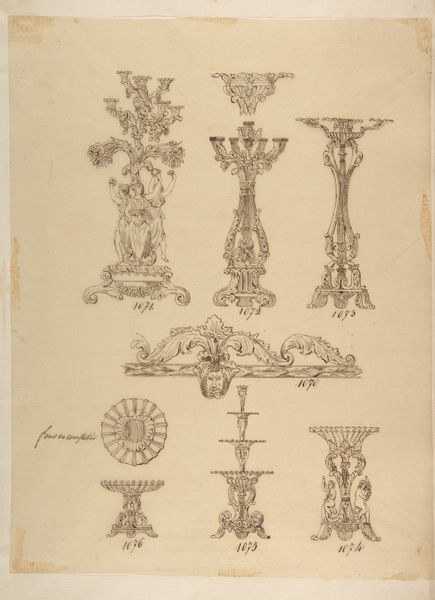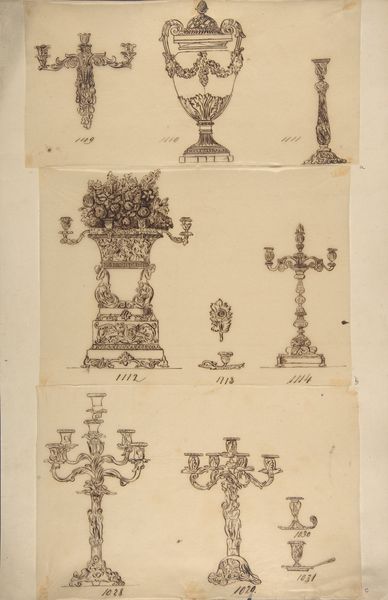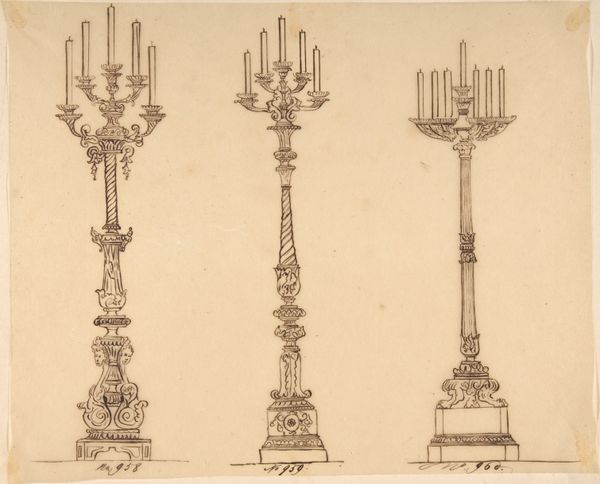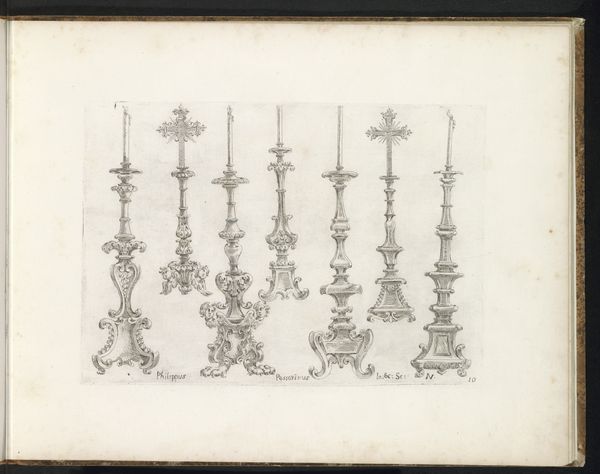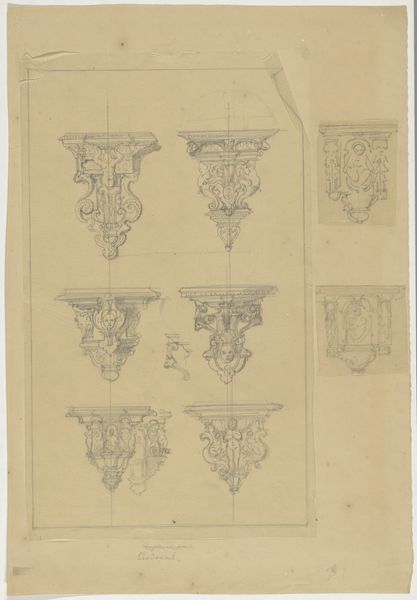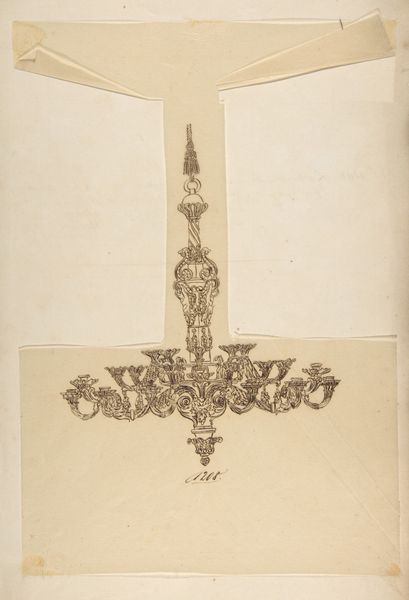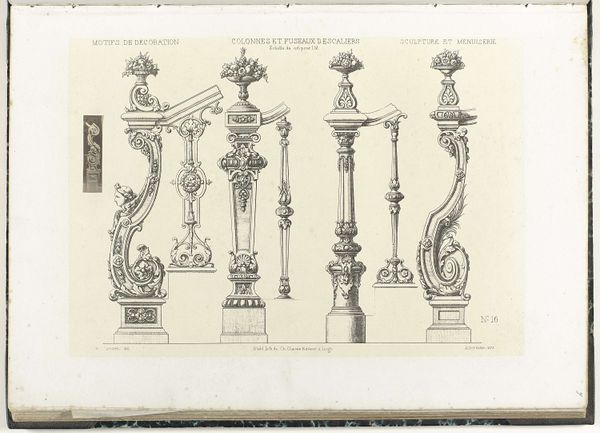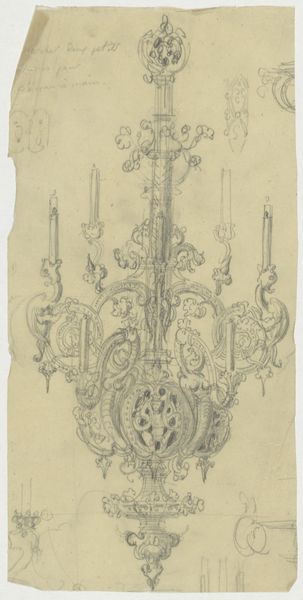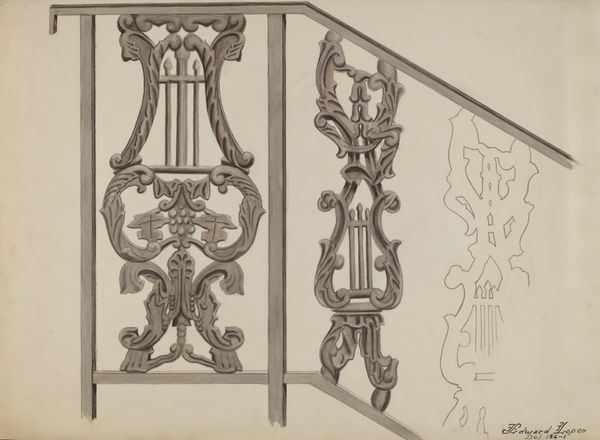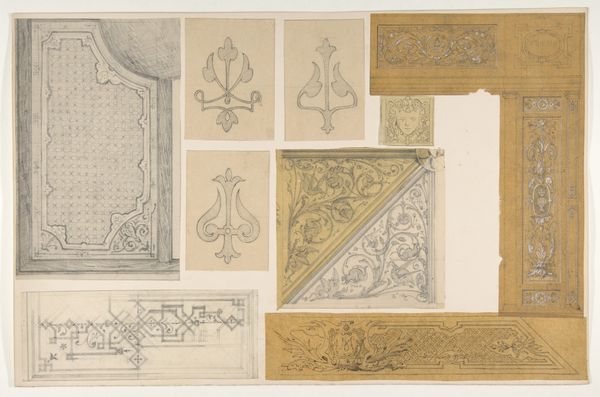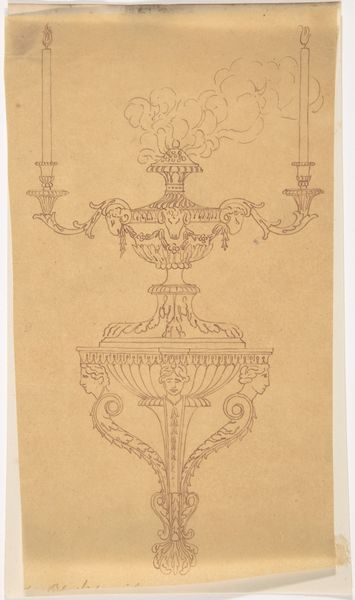
Designs for Three Planters, Three Candelabras, a Dish and a Serving Tray 19th century
0:00
0:00
drawing, print, etching, paper, pen
#
drawing
# print
#
etching
#
etching
#
paper
#
geometric
#
line
#
pen work
#
pen
#
history-painting
#
decorative-art
Dimensions: a: 7 3/8 x 11 1/16 in. (18.8 x 28.1 cm) b: 5 13/16 x 8 3/8 in. (14.8 x 21.2 cm) c: 3 9/16 x 2 1/8 in. (9 x 5.4 cm) d: 3 1/4 x 2 1/16 in. (8.2 x 5.2 cm) e: 9 1/8 x 2 3/16 in. (23.1 x 5.6 cm)
Copyright: Public Domain
Curator: Welcome. We are standing before "Designs for Three Planters, Three Candelabras, a Dish and a Serving Tray," an etching from the 19th century, currently residing at The Metropolitan Museum of Art. The anonymous creator employed pen and ink on paper. What strikes you first about this composite image? Editor: Immediately, it's the repetition of very intricate forms; almost oppressive ornamentation and detailed linework dominate each design, calling to mind a very specific, elite class that demanded such elaborate objects. Curator: Precisely. Consider the overall composition: the designs are neatly arranged, suggesting a catalogue or inventory. Each object is rendered with an intense focus on symmetry and proportion. The etcher emphasizes linearity, creating intricate details and complex patterns through varied line weights and shading. Editor: It makes me think about the labour involved in creating not just these potential objects, but the drawing itself. This wasn't mass production; each curve, each flourish would've been painstakingly hand-crafted, reflective of artisan skills honed over long apprenticeships. Who were these artisans, and what were their working conditions? That is, the material conditions behind the design. Curator: That’s insightful. Thinking purely structurally, the drawings utilize hatching and cross-hatching, which give a three-dimensionality to otherwise flat representations. Observe how the anonymous artist captured gradations of tone to suggest volume and texture. What semiotic relationships can we trace? Editor: It pushes back to a culture deeply invested in display and ritual. The materials likely employed, whether silver or porcelain, catered to ostentatious dining and formal display—reinforcing existing social hierarchies. Curator: A society captivated by decorum, translated visually by recurring symmetrical shapes. The geometric forms reflect a Neoclassical trend perhaps or maybe even pre-Industrial tastes. Editor: It presents an almost fetishistic appreciation for handmade craftsmanship threatened perhaps by emergent industrial processes, an almost nostalgic approach to elite artistic skill. Curator: These designs invite us to examine not just visual pleasure but historical context as well. They reveal that, beneath art, an ocean of historical processes influence artistic practices. Editor: Absolutely, a dialogue between aspiration, consumption, and craftsmanship; it encourages us to consider who makes art, and for whom. It brings out how designs and artworks mirror socio-economic and cultural attitudes of their time.
Comments
No comments
Be the first to comment and join the conversation on the ultimate creative platform.
